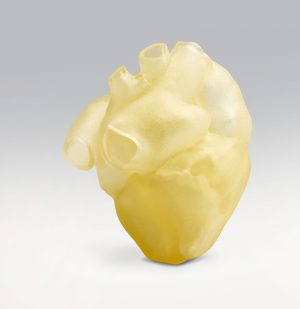Kayak paddles, snowshoes, and skateboards may seem like ordinary products for recreational enthusiasts. But so much engineering and design goes into conceptualizing, and ultimately fabricating them, with the quality and utility that today's recreational enthusiasts demand.
Outdoor sporting goods fabrication can be a challenging market – even for 3D printing. But a newer technology called fused particle fabrication (FPF) is changing the way such products are designed and fabricated.
Transforming Waste Plastics to Precision Sports Equipment
Michigan Technological University partnered with other industrial partners to develop and test an open source industrial FPF printer called Gigabot X. It's a unique printer that can fabricate using recycled products (mainly plastics) on a larger scale.

Multi-material, multi-color 3D printing lets sporting goods manufacturers achieve the most realistic prototypes in the fastest time possible.
Photo courtesy: Stratasys
It utilizes a process called fused particle fabrication (FPF) or another called fused granular fabrication (FGF). These processes skip making filament, which is then fed into a 3D printer. Instead, they skip that step and print directly from shredded recycled waste material.
Ordinarily something as large as a kayak paddle or a skateboard isn't so easy to print on a conventional, smaller 3D printer. But the capability behind the new Gigabot X has been tried and tested to create larger, stronger prints. Such prints are precisely what's demanded by sporting goods manufacturers and users who seek not only specific and precise sizes, but also durability and usage.
What's unique about Gigabot X though is the precedent it sets. From fab labs (individual laboratories available to 3D print items on demand) to university and publicly available 3D printing labs, it can fabricate highly engineered products from material that would otherwise be discarded.
This aligns with an emergence of precision printing, with human factors in mind. While a kayak paddle may seem like a simple piece of equipment, it is not. It's a critical piece of equipment that's often suited to a user and has attributes that experienced and serious kayakers know about.
"This isn't a gadget to make toys for your kids; this is an industrial machine meant to make real, large, high-performance products,” said Joshua Pearce, Richard Witte Endowed Professor of Materials Science and Engineering and a professor in the Department of Electrical and Computer Engineering at Michigan Technological University. “With well over 1,000 fab labs worldwide spreading fast and morphing into environmentally friendly 'green fab labs', the Gigabot X could be a useful tool to add to their services as well as other makerspaces. Of course, for our testing we wanted to use recycled plastic."
The Precision of 3D Printing
This precision and specificity are in lockstep with the power and utility of 3D printing as it relates to human anatomy. Not only is 3D printing being used to print products that meld and mold to the attributes of a human, it's also being used to create human anatomy parts that are complex and remarkably close to the real human anatomy part they are replicating. Everything from bones and blood vessels, to human hearts may be created with the right engineering software and a quality printer.
Add this capability to something like the desired characteristics of sports equipment, made with single-use discarded waste plastics, and we have a giant leap in innovation, return-on-investment, and product quality.
The Bottom Line
Not only is such 3D printing incorporating high precision and sustainable practices, but it's also quite economical. When the Michigan Technological University team figured out the costs to produce some of the items, they were met with some astonishment. The returns on investment neared 1000-fold.

The Stratasys J750 Digital Anatomy 3D Printer has the power to create the look, feel, and function of real organs.
The same holds true for the Strasys J750 Digital Anatomy 3D printer. Because it allows for production of anatomies that simulate the real thing, it alleviates the need for synthetic models, animals, and cadaver labs. Professionals who use such a printer can test and train anywhere. This reduces the overall training and procurement costs.
In addition, the printer reduces the need to conduct obtrusive and sometimes cumbersome tests on cadavers or test dummies, and sometimes results in savings up to 70% of prototyping in more archaic ways.
"Once the capital costs are taken care of, which can often be less than a year, FPF or FGF machines have an enormous potential to make profit. Economically, they absolutely make sense," said Pearce. "The bottom line is that Gigabot Xs pay for themselves under a reasonable load and provide double or triple digit returns on investment under most scenarios. Essentially, if you're using it more than once a week then you're making money easily."




